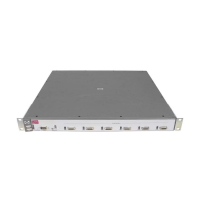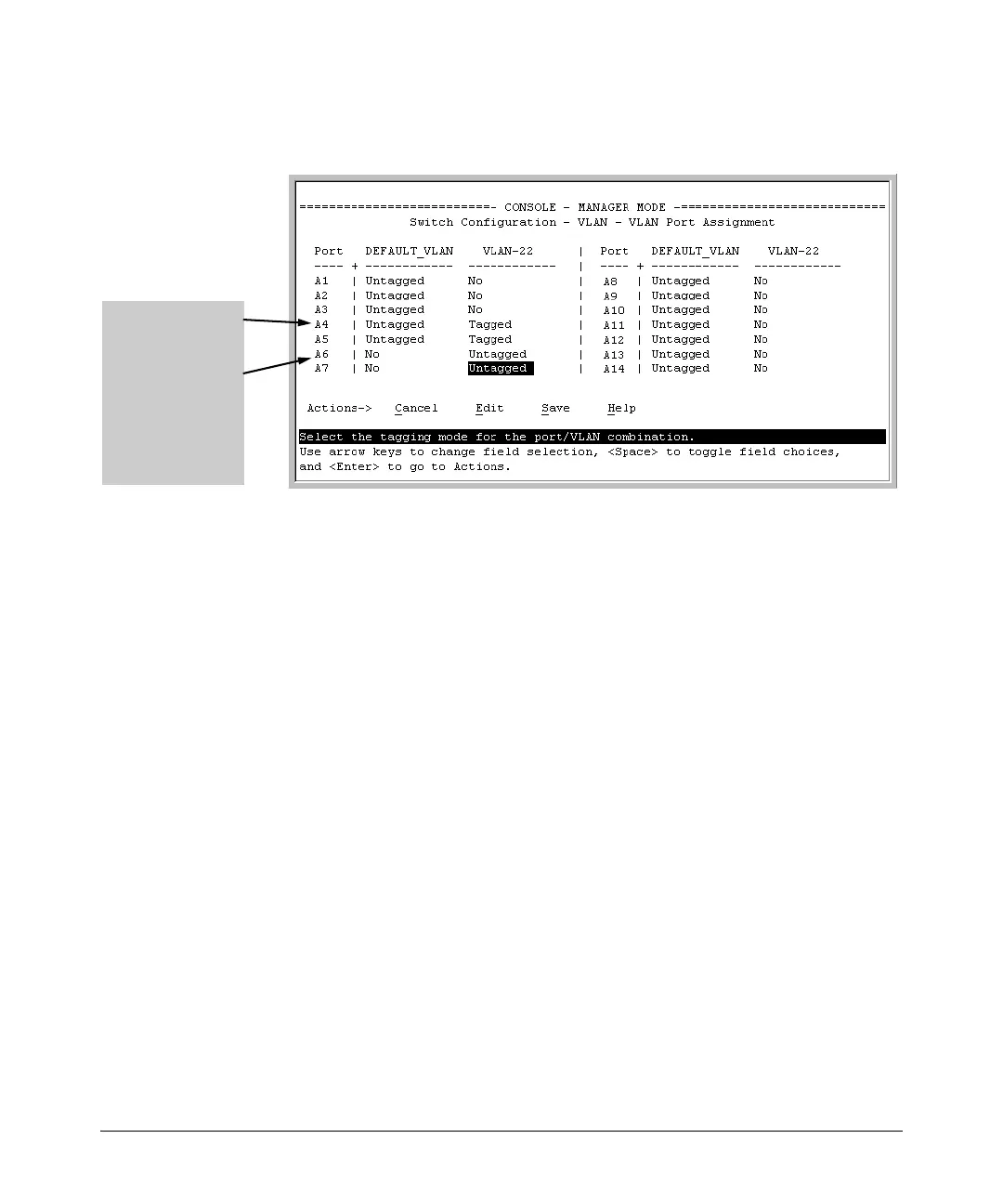Static Virtual LANs (VLANs)
Configuring VLANs
Ports A4 and A5 are
assigned to both
VLANs.
Ports A6 and A7 are
assigned only to
VLAN-22.
All other ports are
assigned only to the
Default VLAN.
Figure 2-17. Example of Port-Based VLAN Assignments for Specific Ports
For information on VLAN tags (“Untagged” and “Tagged”), refer to
“802.1Q VLAN Tagging” on page 2-38.
d. If you are finished assigning ports to VLANs, press
[Enter] and then [S]
(for Save) to activate the changes you've made and to return to the
Configuration menu. (The console then returns to the VLAN menu.)
3. Return to the Main menu.
CLI: Configuring Port-Based and Protocol-Based VLAN
Parameters
In the factory default state, all ports on the switch belong to the (port-based)
default VLAN (DEFAULT_VLAN; VID = 1) and are in the same broadcast/
multicast domain. (The default VLAN is also the Primary VLAN. For more on
this topic, refer to
“The Primary VLAN” on page 2-43.) You can configure up
to 255 additional static VLANs by adding new VLAN names, and then assigning
one or more ports to each VLAN. (The switch accepts a maximum of 256
VLANs, including the default VLAN and any dynamic VLANs the switch creates
if you enable GVRP. Refer to
chapter 3, “GVRP” .) Note that each port can be
assigned to multiple VLANs by using VLAN tagging. (See “802.1Q VLAN
Tagging” on page 2-38.)
2-27

